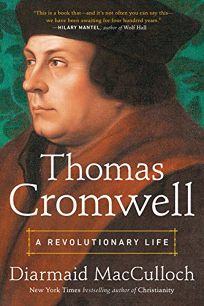The reign of Alfonso X the Wise was the one which entailed the greatest prosperity and splendour for the Jewish community of Toledo. During his reign the Jewish quarter of Toledo became known for its scale, the luxuriousness and beauty of its public buildings, and the intellectual quality of its rabbis. This was the place where the Jews of Toledo could work, raise families and practice their religion at one of the region’s 10 synagogues, without the fear of being persecuted for their beliefs.
However, during the 14th century, the epidemic of the Black Death (1348), and the war between Pedro I the Cruel and Enrique of Trastámara resulted in deep social ill-feeling borne out by the attacks on the Jewish quarter in 1355 and 1391. In addition, there was a fire in the enclosure of Alcaná, a commercial district where the Jews had their shops, workshops and some houses.
In the latter part of the same century the construction of the cathedral cloister was planned and this began to be built on August 14th 1389. There is some doubt as to whether the fire was started by the Chapterhouse of the cathedral to allow the construction of the cloister planned by Archbishop Pedro Tenorio in the Alcaná area.
The anti-Jewish revolts of 1391 reached Toledo too. On June 18th 1391 the Jewish quarter of Toledo was attacked at night in a similar way to other cities in the kingdom. Induced by the violent exhortations of Vincente Ferrer, the city was the scene of one of the most appalling outbreaks of violence. Previously the nobles of Toledo had on the whole done their part in protecting the Jews; but when the agitation reached that city they were found among the most violent in the onslaught on the larger Jewry. This had resisted the attacks of Henry II.; but it was now entered by the rioters at different gates, almost all the Jews being put to death - The victims of the slaughter included prominent craftsmen, poets and men of letters. The majority of the synagogues of the city were destroyed or seriously damaged. This was practically the ruin of the Toledo Jewry.
The disastrous economic consequences for the city were soon felt; particularly by private individuals, monasteries and other religious institutions who lost the income they had from the taxes on the Jewish aljamas. The hardest hit was the chaplains whose ecclesiastical profits derived from the rents in the Jewish quarter.
Ferrer again visited the city for a fortnight in May, 1411, with the result that the synagogue of St. Maria la Blanca was turned into a Church. In truth, the majority of the survivors of the massacre of 1391 had saved their lives by becoming converted; so that very few true believers still remained in the city, and these were deprived in 1419 of all opportunity to hold public office; and on June 15, 1449, thirteen of them were turned out of office as "suspects in faith," among them being members of the Lunez, Lopez, Gonzalez, Herrera, and Cota families, afterward distinguished among the Maranos, whose very name is supposed to have originated in Toledo at this time .
The aggressiveness of the Christians to Jews and Moslems, which became ever more pronounced, resulted in the proclamation of a series of ordinances against them (1451) whereby they were required to obey a series of restrictive measures such as the prohibition to walk around the streets at night, enter churches or monasteries without authorisation, leave their houses during Christian festivities as well as the obligation to wear distinctive signs sewn into their clothes. The Jews of Toledo had already complained that in 1450 King Juan II had ordered the revocation and cancellation of all anti-Jewish ordinances in place in the Castilian kingdom as there had been many places where they had done so and the Jews had left. The King ordered the Town hall of Toledo to follow his order and the latter, meeting on February 23rd 1452, reviewed the ordinances, doing away with some, but modifying and maintaining others.
Several fires accompanied the conditions of social disequilibrium which were still in place in the 15th century. Supported by the League of Nobles, who symbolically dethroned Enrique IV in the so-called Farce of Ávila and crowned his brother Alfonso (5th July 1465), the old Christians started clearing the lands of Castile of all those who had Jewish blood, whether they were Jewish or convertsas well as Moslems converted to Christianity. The latter, feeling threatened, staged an uprising in Toledo on the day of the fires of Magdalena (22nd July 1467). Heavily armed, the converts surrounded the cathedral and they kept the Christians under siege after killing two canons and a few others. A thousand Christians and reinforcements came to the rescue of those besieged. The fighting then began on the outskirts of the cathedral and continued in the Magdalena district. Those besieged were able to get out. The converts responded by setting fire to the Magdalena district. All the neighbouring houses burned to the ground immediately; due to a high wine, the fire spread quickly resulting in an estimated one thousand six hundred houses were destroyed. The old Christians, after many days of fighting, were finally able to control the fire and reduce the converts. Their ringleader, Fernando de la Torre, was put to death; the same fate would befall many other converts in the following days.
The uprising was of little benefit to the insurgents who were forced to flee from Castile with their assets. Those who decided to stay, deprived of their right to bear arms ( 1468) or hold posts in the Administration (1469), finally had to convert and attest to their good faith to be Christians before the Inquisition Court. Yest still more persecutions, forced conversions, mass murder, and rioting was prevalent in the city 1486 - 1490) before the establishment of the Inquisition under the Catholic Monarchs.
 This then is the backdrop of the novel - and it is a powerful one. The character of Vincente is born in the city in the wake of the violence of 1391 - his parents are secret conversos - he is a man conflicted in a time of political and religious upheaval. His nemesis is a power-driven lawyer who wants to incite a religious purge (I am wondering if he has been based on the notorious Vincente Ferrer).
This then is the backdrop of the novel - and it is a powerful one. The character of Vincente is born in the city in the wake of the violence of 1391 - his parents are secret conversos - he is a man conflicted in a time of political and religious upheaval. His nemesis is a power-driven lawyer who wants to incite a religious purge (I am wondering if he has been based on the notorious Vincente Ferrer).
This is a well-crafted tome - there is the human, historical and political element; the characters aren't perfect - they are flawed. The plot is engrossing, suspenseful and dramatic due - I am certain - to the research that went into the storyline (many events mentioned in the novel are based on real events). The narrative draws the reader into the everyday struggles of a persecuted group and you can't help but empathise.
I would put this on the same shelf as Ken Follett's "Pillars of the Earth" and "Cathedral of the Sea" by Ildefonso Falcones. These are stories of epic proportions - and I have no doubt it will join the other two in being made into a series.






















